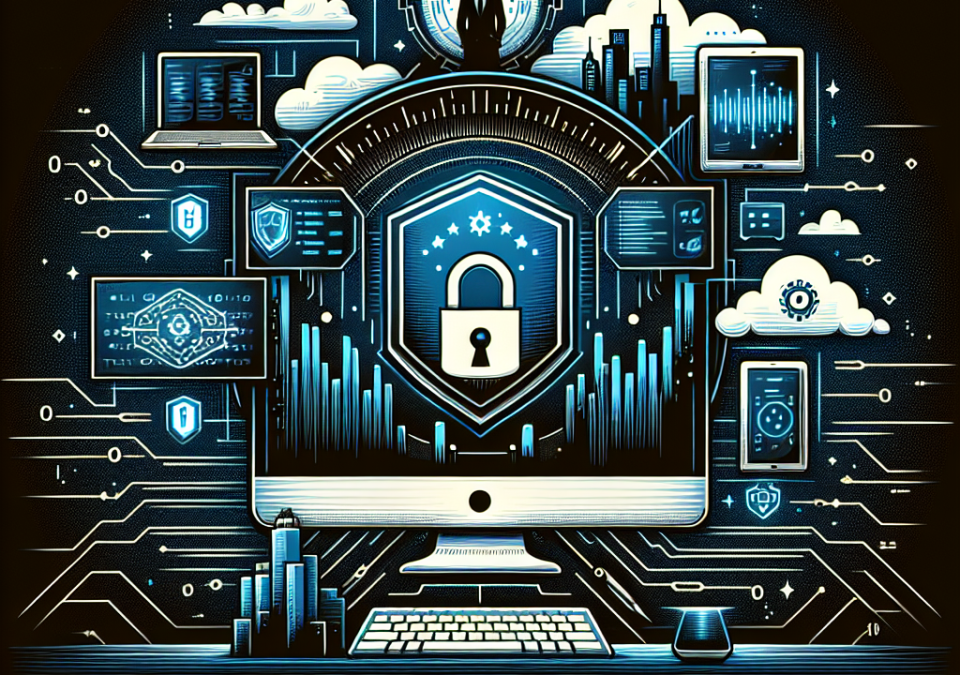
Building a Strong Foundation: The Importance of Identity Fundamentals in Security Compliance
June 20, 2025
Navigating the Maze: Key Compliance Standards Every Organization Should Know
June 21, 2025
In today’s hyper-connected world, businesses are increasingly vulnerable to cyber threats. As organizations grow and adapt to the digital landscape, they must prioritize cybersecurity to protect sensitive data and maintain customer trust. One effective solution that stands out is Security Information and Event Management (SIEM). Here’s why every business should invest in SIEM to safeguard their digital frontier.
Understanding SIEM
What is SIEM?
Security Information and Event Management (SIEM) refers to solutions that aggregate and analyze security data from across an organization’s infrastructure. By combining Security Information Management (SIM) and Security Event Management (SEM), SIEM tools provide real-time analysis of security alerts generated by various hardware and applications.
How Does SIEM Work?
SIEM systems collect log and event data generated by host systems, applications, and security devices. They normalize this data, making it easier to analyze. With built-in analytics and correlation capabilities, SIEM can detect anomalies, identify potential threats, and generate alerts for further investigation.
The Necessity of SIEM for Businesses
1. Real-time Threat Detection
In a world where cyber threats evolve rapidly, the ability to detect threats in real time is pivotal. SIEM solutions can monitor activities across an organization’s network 24/7. This proactive approach allows businesses to identify potential breaches before they escalate into significant incidents.
2. Centralized Visibility
SIEM provides a centralized platform for monitoring security events and alerts from diverse sources. This visibility enables security teams to correlate data across multiple environments, simplifying the identification of threats that might otherwise go unnoticed in isolated systems.
3. Compliance Management
Regulatory compliance is a crucial aspect of modern business. Many industries require organizations to adhere to strict data protection regulations. SIEM can automate log management and reporting, making it simpler to demonstrate compliance with standards such as GDPR, HIPAA, and PCI DSS.
4. Incident Response and Forensic Analysis
When a security incident occurs, timely and informed responses are critical. SIEM not only alerts teams to potential threats but also provides contextual data that is essential for forensic analysis. This data helps security teams understand the attack vector and develop strategies for prevention in the future.
5. Risk Management and Threat Intelligence
With built-in threat intelligence capabilities, SIEM systems can provide insights into the latest vulnerabilities and attack techniques. By correlating this information with internal data, businesses can assess their risk profile more effectively and prioritize their security measures accordingly.
The Benefits of Implementing SIEM
1. Cost Efficiency
While implementing a SIEM solution may seem like a significant investment, it can save organizations money in the long run. By preventing major security breaches, which can lead to fines, loss of customer trust, and damaged reputation, SIEM provides a valuable return on investment.
2. Enhanced Productivity for Security Teams
Automating alerting and reporting processes reduces the manual workload for security teams. This allows skilled professionals to focus on more strategic activities rather than getting bogged down by routine tasks.
3. Improved Incident Response Times
With real-time monitoring and alerts, organizations can respond to incidents faster. Delays in response can exacerbate damage; therefore, a robust SIEM solution ensures that threats are addressed promptly.
4. Adaptability to Evolving Threat Landscapes
Cybersecurity is not static; it evolves with new technologies and techniques. SIEM solutions are designed to adapt to these changes, allowing organizations to stay ahead of emerging threats and challenges.
Conclusion
In the digital age, the question isn’t whether a business can afford SIEM but whether it can afford to be without it. As cyber threats become more sophisticated, SIEM offers an essential layer of protection, enabling organizations to monitor their networks, respond to incidents, and comply with regulations more effectively. By investing in SIEM, businesses defend their digital frontier, ensuring sustainability and longevity in an increasingly hostile digital landscape.
Call to Action
If you haven’t already, consider evaluating your cybersecurity strategy and incorporating SIEM into your defense arsenal. The protection of your digital assets—and the trust of your customers—depends on it.







